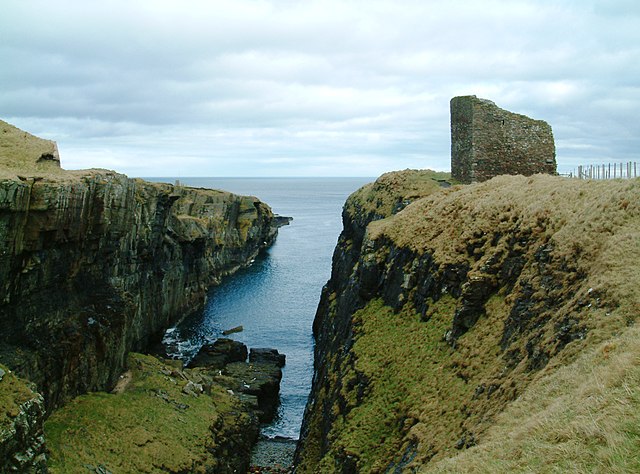Guðrøðr Rǫgnvaldsson, also known as Guðrøðr Dond, was a thirteenth-century ruler of the Kingdom of the Isles. He was a member of the Crovan dynasty, and a son of Rǫgnvaldr Guðrøðarson, King of the Isles, the eldest son of Guðrøðr Óláfsson, King of Dublin and the Isles. Although the latter may have intended for his younger son, Óláfr, to succeed to the kingship, the Islesmen instead settled upon Rǫgnvaldr, who went on to rule the Kingdom of the Isles for almost forty years. The bitterly disputed royal succession divided the Crovan dynasty for three generations, and played a central role in Guðrøðr's recorded life.
Guðrøðr's name as it appears on folio 42v of British Library Cotton Julius A VII (the Chronicle of Mann): "Godredus".
A king gaming piece of the so-called Lewis chessmen.
A rook gaming piece of the so-called Lewis chessmen.
A queen gaming piece of the so-called Lewis chessmen.
Rǫgnvaldr Guðrøðarson ruled as King of the Isles from 1187 to 1226. He was the eldest son of Guðrøðr Óláfsson, King of Dublin and the Isles. Although the latter may have intended for his younger son, Óláfr, to succeed to the kingship, the Islesmen chose Rǫgnvaldr, who was likely Óláfr's half-brother. Rǫgnvaldr went on to rule the Kingdom of the Isles for almost forty years before losing control to Óláfr.
A king gaming piece of the Lewis chessmen. Comprising some four sets, the pieces are thought to have been crafted in Norway in the twelfth- and thirteenth centuries. They were uncovered in Lewis in the early nineteenth century.
Ruinous Castle of Old Wick, a seemingly twelfth- or thirteenth-century fortress, was possibly the power centre of Haraldr Maddaðarson.
According to tradition, the stone circle Clach an Righ ("King's Stone"), near Syre, marks the site where Haraldr Maddaðarson was defeated by Rǫgnvaldr.
The Isle of Man Airport encompasses a site once called Ronaldsway. Rǫgnvaldr may well be the eponym of this place name.








